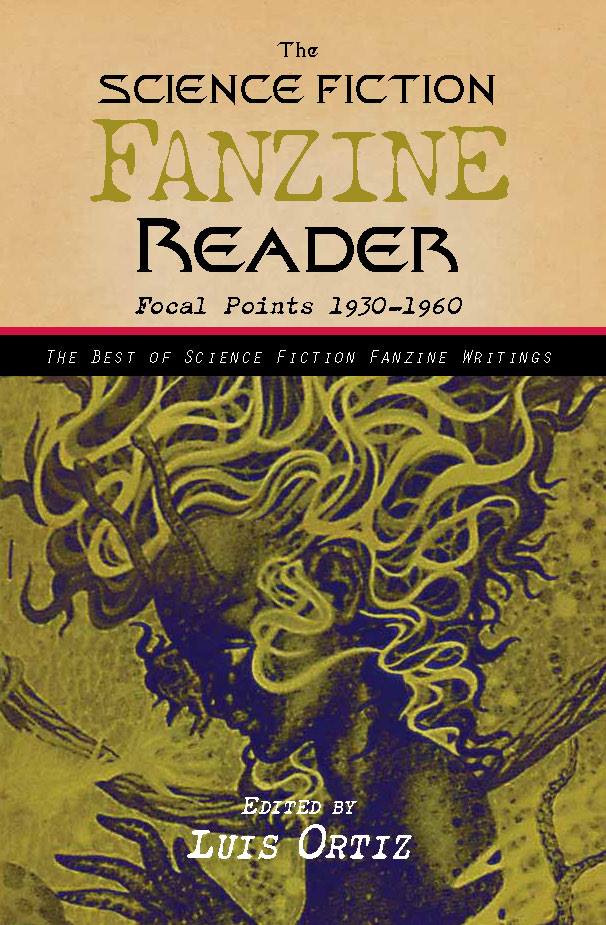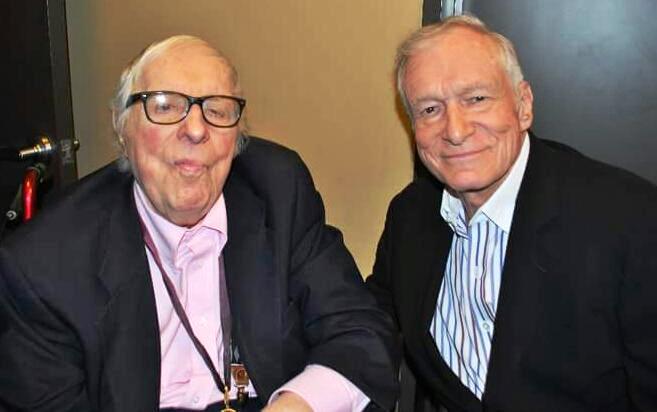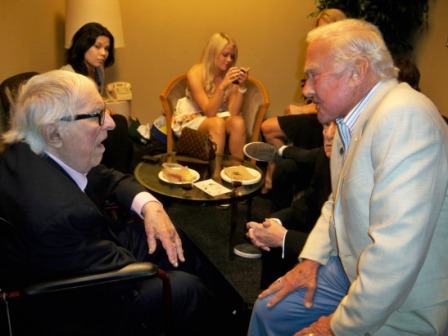(1) BIG DEAL. Marie Vibbert counsels writers about “Playtesting Card Games” at the SFWA Blog. One bit of advice will sound very familiar.
Immolate Your Darlings
You’ve perhaps heard writers talk about “Murdering their darlings,” which refers to the agony of having to cut a beautiful sentence, scene, or even a sub-plot that you love but doesn’t serve the overall arc of the story. I once twisted five drafts of a novel around a scene I absolutely adored before I realized that it had to go. Ow, it hurt.
The same thing happens in games. There might be a mechanic, a special card, an illustration, a subtle joke…and you love it, but it has to go. It’s worse when you have this nice physical card you made for the mock-up.
Even your game’s theme, which might seem the most essential part of it, must be disposable. On the off chance your game is picked up by a publisher, one of the most common things they want to do is re-theme it, probably for some big franchise. (In case you thought someone set out to create the Go Bots 50th Anniversary Card Game.)
You cannot grow attached before completion. The game is in flux. Consider every part expendable in service to the greater whole….
(2) SFF ART UP FOR AUCTION. [Item by Sandra Miesel.] I’ve put some of my sf collection up for sale at RipleyAuctions.com The live auction is October 5 and registration is free. My pieces include: the Kelly Freas’ DAW cover painting for Soldier, Ask Not by Gordon R. Dickson and its preliminary sketch, Kelly’s Analog interior illustration for “The Second Kind of Loneliness” by George R.R. Martin; Kelly’s Laser Books sketch for The Extraterritorial by John Morrissey; Richard Powers’ cover painting for Far Out by Damon Knight; John Schoenherr’s Analog interior illustrations for “And He Fell into a Dark Hole” by Jerry Pournelle, “The Demon Breed” by James Schmitz, “Spaceman” by Murray Leinster, and the ultimate prize: Schoenherr’s scratchboard Analog illustration for the very first installment of “Dune World”. Sandra Miesel at Ripleyauctions.com.

(3) REMEMBERING THE FAHRENHEIT FIFTIES. Heritage Auctions has an interesting item on the block – a volume of Fahrenheit 451 inscribed by Bradbury to Hugh Hefner.
40th Anniversary Edition. PRESENTATION COPY, INSCRIBED AND SIGNED BY THE AUTHOR TO HUGH HEFNER: “For Hef! Who published this when almost everyone else was afraid! With gratitude! Ray Bradbury. Nov. 3, ’93. 40 years later!”
Fahrenheit 451 was first published by Ballentine Books, Inc., in 1953, as a revision and expansion of his fifty-six-page novella, “The Fireman.” The novel was sold to Hugh Hefner’s new magazine, Playboy, which published the story in three installments in its fourth, fifth, and sixth issues (March 1954 to May 1954).


(4) SPOTLIGHT ON MAD MAGAZINE. [Item by Steven French.] If you happen to be in Massachusetts over the next month, check out “What, Me Worry? The Art and Humor of Mad Magazine,” an exhibition running until October 27 at the Norman Rockwell Museum.
It covers the full 72-year history of Mad, highlighted by the stretch from the mid-1960s to the early 1990s, when the magazine pilloried mass culture—television, movies, politics and more—in a way that introduced satire to kids raised on tamer entertainment like “Leave It to Beaver.”
The Smithsonian article on it is an interesting read in its own right! “The Madcap History of Mad Magazine Will Unleash Your Inner Class Clown”.
… Mad magazine had its beginnings in 1947, when publisher Maxwell Gaines’ death in an upstate New York boating accident left his Educational Comics company to his 25-year-old son, William Gaines. Under Maxwell, the comics featured stories of science, animals, history and Picture Stories From the Bible. When William took over, he quickly shifted gears to “Entertaining Comics” (EC for short) and started publishing romance, westerns, science fiction, war and horror stories, most notably Tales From the Crypt. Gaines the younger had more than laughs and frights on his mind, however; woven into EC Comics were progressive ideals around racial equality, pacifism, environmentalism and the existential nuclear-age dread rarely spoken of in the placid, conformist 1950s.
In 1952, a comic book poking fun at other comic books debuted, but it would take four issues for Tales Calculated to Drive You MAD to take off. That fourth one featured the parody “Superduperman,” a blueprint for making hay of pop culture and politics. Amid a panic over youth corruption, inspired in part by EC’s other publications, editor Harvey Kurtzman convinced Gaines to retool Mad from a comic book into a magazine, and in July 1955 (Issue No. 24), a future mockery machine emerged….
(5) LITIGATION IS IN THE CARDS. “Cards Against Humanity sues SpaceX, alleges ‘invasion’ of land on US/Mexico border” – Ars Technica has the story.
Cards Against Humanity sued SpaceX yesterday, alleging that Elon Musk’s firm illegally took over a plot of land on the US/Mexico border that the party-game company bought in 2017 in an attempt to stymie then-President Trump’s attempt to build a wall.
“As part of CAH’s 2017 holiday campaign, while Donald Trump was President, CAH created a supporter-funded campaign to take a stand against the building of a Border Wall,” said the lawsuit filed in Cameron County District Court in Texas. Cards Against Humanity says it received $15 donations from 150,000 people and used part of that money to buy “a plot of vacant land in Cameron County based upon CAH’s promise to ‘make it as time-consuming and expensive as possible for Trump to build his wall.'”
Cards Against Humanity says it mowed the land “and maintained it in its natural state, marking the edge of the lot with a fence and a ‘No Trespassing’ sign.” But instead of Trump taking over the land, Cards Against Humanity says the parcel was “interfered with and invaded” by Musk’s space company. The lawsuit includes pictures that, according to Cards Against Humanity, show the land when it was first purchased and after SpaceX construction equipment and materials were placed on the land….
…Cards Against Humanity also set up a website to publicize its lawsuit. “We have terrible news,” the website says. “Seven years ago, 150,000 people paid us $15 to protect a pristine parcel of land on the US-Mexico border from racist billionaire Donald Trump’s very stupid wall. Unfortunately, an even richer, more racist billionaire—Elon Musk—snuck up on us from behind and completely fucked that land with gravel, tractors, and space garbage.”
The website claims that SpaceX made a “lowball offer” to buy the land after Cards Against Humanity complained….
(6) WRITER BEWARE. “Wolves in Authors’ Clothing: Beware Social Media Marketing Scams” says Victoria Strauss at Writer Beware.
For authors, one of the (these days, increasingly few) positives of social media is connecting with other authors. Especially if no one else in your family/social circle is involved in the arts (raises hand), it’s great to be able to find a community where you can discuss craft, business, the ups and downs of querying, the challenges of self-publishing–both sharing your own experiences and learning from others’.
But…what if that friendly author who just DM’d you on one of your social media accounts isn’t actually a writer, but someone who wants to sell you worthless “marketing” services?
… Oooh, conversion enhancement campaign! That’s some sexy jargon right there.
The name on the marketer’s Instagram account (which no longer exists) was Ashley Wallace of Ashley Digitals. You can see the author’s conversation with her–including an unconvincing excuse for why her website URL doesn’t work, an elaborate sales pitch, and false claims about clients….
(7) FOUR-PAGE GOTHAM GAZETTE INSERT IN THURSDAY NYT. [Item by Daniel Dern.] Our household gets the New York Times in the classic physical flattened-dead-tree version; I was bemused to discover the Thursday, September 19 edition included a four-page insert, the Gotham Gazette.
As part of HBO/MAX’s promotion of its new Penguin live-action show, which has just started. I/we haven’t yet tried it (but we just finished, and enjoyed, the first two episodes of Agatha All Along, over on Disney+, which, perhaps-arguably, is bat-adjacent via Walt’s round-eared mascot.)
Here’s some article links — note, the first link has readable images of the four-page insert. Wak, wak, wak.
“The Penguin: Gotham Gazette Offers Interesting Post-The Batman Details” at Bleeding Cool. This article has readable images of full four online pages. The others below have some partial shots.
“How the New York Times became the Gotham Gazette for a day” at Fast Company. Including “But if you pass through Grand Central Station today, or Little Italy, or Times Square, you’ll see old-school newspaper hawkers schlepping copies of the Gotham Gazette” [also, according to the ComicBook.com article listed below, at Times Square, Penn Station]
“The Penguin Takeover Heads to New York City to Celebrate Premiere” at Comicbook.com. This article includes deets on the “Penguin take-over” events in NYC and elsewhere:
HBO and Max are gearing up for the premiere of The Penguin with a takeover of the Big Apple. The spinoff of The Batman brings Colin Farrell back as Oz Cobb, aka the titular Penguin and foe of the Dark Knight. The Penguin has started a global campaign leading to the premiere on Thursday, September 19th, with one of its first stops at San Diego’s Gaslamp Quarter. The Penguin Takeover will involve exclusive merchandise trucks all across New York City, along with the lighting of iconic landmarks and collaboration with local businesses using Penguin’s signature plum purple hue….
Max is continuing The Penguin’s presence internationally following the Iceberg Lounge’s success in San Diego. The Penguin will bring the iconic Iceberg Lounge to select locations in France, Spain, The Netherlands, and Thailand, along with other local promotions in the APAC, EMEA, and LATAM regions. Fans might also spot The Penguin’s purple Maserati in the streets of São Paulo, Paris, and other major cities.
The Penguin Takeover will feature the Feast of San Gennaro, the New York Latino Film Festival Block Party, early fan screenings at Alamo Drafthouse, and specialty menu items at participating businesses as Gotham comes to life. The takeover will extend beyond New York, with The Penguin’s iconic Iceberg Lounge and other experiences in select cities worldwide.
Also coverage at MSN.com: “The Penguin makes The Gotham Gazette real for one day only as the Max series takes over The New York Times to explain everything that’s happened since The Batman”.
And Looper: “HBO’s Penguin Confirms Where Batman Is (Or Isn’t)”.
(8) MEMORY LANE.
[Written by Cat Eldridge.]
Anniversary: Buck Rogers in the 25th Century (1979)
Forty-five years ago on this evening, Buck Rogers in the 25th Century first aired on NBC.
It is of course based on characters created by Philip Francis Nowlan. It started out as a comic strip that first appeared in daily U.S. newspapers on January 7, 1929, subsequently appearing in Sunday and international newspapers, then there were books, a radio adaption, comic books, a serial film. You get the idea.
So after all of that came this series. It was developed by Glen Larson who created Battlestar Galactica and Leslie Stevens who created Outer Limits.
It lasted but two seasons in total comprising thirty-seven episodes. A feature-length pilot episode for the series was released as a theatrical film, Buck Rogers in the 25th Century. It did spectacularly well at the box office as it cost just three and a half million and made eighteen point seven more than that!
The film was narrated as was the first season by William Conrad who had found stardom as a detective in the two series, Cannon and Nero Wolfe. Yes, he played Wolfe though briefly as it lasted but fourteen episodes. Who here saw him as Wolfe?
The only cast that counts was Gil Gerard as Captain William “Buck” Rogers and Erin Gray as Colonel Wilma Deering. Oh, and Mel Blanc in the first season voicing Twiki. Felix Silva would voice him in the second season. Other cast members I’ll note are Tim O’Connor as Dr. Elias Huer, Pamela Hensley as Princess Ardala and Henry Silva as Kane. Andrew Thom Christopher as Hawk, a bird man with the most comical feather for hair I’ve ever seen!
Later interviews with Gerard and Gray as well as the directors say that neither got along with the other as they thought each was getting more lines and better stories. Oh well.
Buster Crabbe who played Buck Rogers in the original thirties Buck Roger’s film serial would play Brigadier Gordon in an episode here. Yes, a nod to his other film series.
The casting director had a fondness for one of our favorite series. Many of the actors who had played villains in the Batman series guest-starred here such as Frank Gorshin, Roddy McDowall, Julie Newmar and Cesar Romero.
It’s worth noting that the series re-used most of the props, star fighters, stages, some of the effects film and even costumes from Battlestar Galactica. The network obviously being keen on keeping costs down at all costs.
Ratings were fine for the first season, but dropped drastically in the second season and cancellation was decided by mid-season.
It has streamed on Amazon and on Peacock, not surprisingly on the latter as that’s owned by NBC, and Prime, but not is not currently streaming anywhere.

(9) COMICS SECTION.
- Close to Home has high delivery expectations.
- Eek! has an unimpressed internist.
- Rhymes with Orange comments on visiting relatives.
- Saturday Morning Breakfast Cereal in effect updates a classic Mark Twain joke.
(10) SQUID GAME RETURNS. “’Squid Game’ Season 2 Trailer: New Players, New Game” – Variety introduces the trailer.
“Squid Game” is back and Netflix has released the first teaser for its hotly anticipated second season. The footage comes as the final reveal of the streamer’s annual Geeked Week fan event.
The teaser picks things off right after Season 1’s finale, when Seong Gi-hun abandoned his plans to go to the U.S. and instead started a daring chase with a newfound motive. In the short teaser, he appears back in his 456 uniform amid a crowd of new contestants. Another massive cash prize awaits them, with a quick look at the games to come.
The globally successful Korean series follows financially struggling individuals competing in deadly games for a chance to win a life-changing prize, revealing the dark depths of human desperation and resilience…
(11) THE SHAPE OF THINGS TO COME. “Scientists discover weird new kind of shape found in nature” reports Boing Boing.
Mathematicians have identified a new class of shapes that “tile space without using sharp corners.”
From bathroom floors to siding on buildings, it’s common to cover areas without gaps by arranging shapes with straight edges and flat surfaces. In the natural world though, those kinds of shapes are rare. Patterns like those in muscle tissue are created with flowing curves, rounded surfaces, and almost no sharp angles. But the mathematics of these “soft shapes” have been a mystery until now.
“Nature not only abhors a vacuum, she also seems to abhor sharp corners,” says University of Oxford mathematician Alain Goriely who, with colleagues from the Budapest University of Technology and Economics, discovered the new shape class called “soft cells.”
From Oxford University:
In 2D, these soft cells have curved boundaries with only two corners. Such tiling patterns are found, among others, in muscle cells, zebra stripes, the shapes of river islands, in the layers of onion bulbs, and even in architectural design.
In 3D, these soft cells become more complex and interesting. The team first established that, in 3D, soft cells have no corners at all. Then, starting with conventional 3D tiling systems such as the cubic grid, the team showed that they can be softened by allowing the edges to bend whilst minimising the number of sharp corners in this process. Through doing this, they found entire new classes of soft cells with different tiling properties.
Professor Gábor Domokos said: ‘We found that architects – including Zaha Hadid – have constructed these kinds of shapes intuitively whenever they wanted to avoid corners.
(12) TRANSCENDENCE. [Item by SF Concatenation’s Jonathan Cowie.] The concept of transcendence or subliming (the term used in Iain M. Banks’ Culture novels) is a minor, but recurring SF trope by which a civilization evolves to a point when they leave our space-time continuum for a ‘higher’ plane of existence. I think I first came across this half a century ago reading Arthur C. Clarke’s Childhood’s End. Anyway, Isaac Arthur over at Isaac Arthur Science Futurism this week takes a bit of a dive into this concept…
Many seek a path to enlightenment through study and meditation, but what does science tell us about transcendence? And could entire civilizations seek to leave this reality behind?
(13) FROM THE CRYPT, ER, ARCHIVE. The Paul Lynde Halloween Special of 1976 has a highly eclectic cast – like Margaret Hamilton and Betty White vamping together!
Bringing Witchypoo from HR Pufnstuf and Wizard of Oz’s wicked Witch of the West together but only Paul Lynde could give you the band KISS and Donny and Marie Osmond in the same show.
[Thanks to John King Tarpinian, Chris Barkley, Cat Eldridge, SF Concatenation’s Jonathan Cowie, Steven French, Kathy Sullivan, Teddy Harvia, Mike Kennedy, and Andrew Porter for some of these stories. Title credit belongs to File 770 contributing editor of the day Jon Meltzer.]








